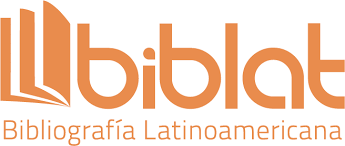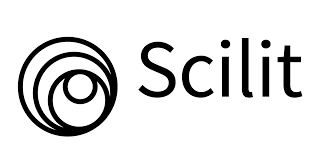Evaluación de sustancias fitoprotectoras usadas como estrategia de neutralización de la acción del glifosato sobre cultivos de erythroxylum coca
DOI:
https://doi.org/10.22335/rlct.v2i2.79Palabras clave:
Erythroxylum coca, fitoprotectores, glifosato, erradicación, aspersiones, cultivos ilícitosResumen
Son múltiples las estrategias empleadas por los cocaleros para resistir a los programas de erradicación. El estudio tuvo como objetivo evaluar 3 tratamientos usados por los cultivadores de coca para neutralizar la acción del glifosato, para tal efecto se estableció un cultivo de coca Erythroylum coca y mediante diseño experimental en bloques al azar se aplicaron los tratamientos consistentes en aspersiones a plantas adultas completamente establecidas (8 meses de edad) compuestos en 3 tipos de sustancias disueltas en agua: Melaza 0.1 g/ml., Leche 1 g/ml, Jabón detergente 10 g/l, mediante inspección basada en la escala de ALAM se determinó los signos de toxicidad y la efectividad fitoprotectora de las sustancias empleadas encontrándose la ineficacia de las estrategias.
Descargas
Referencias
ALFERNESS, (1994). P. L. Determination of glyphosate and (aminomethyl) phosphonic acid in soil, plant and animal matrices, and water by capillary gas chromatography with mass-selective detection.Journal of Agricultural and Food Chemistry. Dec. v. 42 (12) p. 2751-2759.
ANTON, F. A. (1993). Degradational behavior of the pesticides glyphosate and diflubenzuron in water. Bulletin of environmental contamination and toxicology. Dec. v. 51 (6) p. 881-888.
ADKINS, S.W. (1998). Influence of environmental factors on glyphosate efficacy when applied to Avena fatua or Urochloa panicoides. Weed Research. Apr. v. 38 (2) p. 129-138.
ASOCIACIÓN LATINOAMERICANA DE MALEZAS (ALAM). (1974). Recomendaciones sobre unificación de los sistemas de evaluación en ensayos de control de malezas. ALAM, v. 1, n. 1, p. 35-38.
BORJESSON, E.; Torstensson, L. New methods for determination of glyphosate and (aminomethyl) phosphonic acid in water and soil. J-ChromatogrA. Amsterdam; New York: Elsevier, 1993- July 21, 2000. v. 886 (1/2) p. 207-216.
CARLSON, K. L. (1984). Comparative phototoxicity of glyphosate, SC-0224, SC-0545, and HOE00661. Weed science. Nov 1984. v. 32 (6) p. 841-844.
CARSON, D. B. (1997). Biodegradation of N-phosphonomethyliminodiacetic acid by microorganisms from industrial activated sludge. Canadian Journal of Microbiology. Jan. v. 43 (1) p. 97-101.
CORET, J. M.; CHAMEL, A. R. (1993). Influence of some nonionic surfactants on water sorption by isolated tomato fruit cuticles in relation to cuticular penetration of glyphosate. Pesticide Science. Essex: Elsevier Applied Science Publishers. v. 38 (1) p. 27-32.
DICK, R.E. (1995). Glyphosate-degrading isolates from environmental samples: occurrence and pathways of degradation. Applied microbiology and biotechnology. July. v. 43 (3)p. 545-550.
DICKSON, R.L. (1990). Effect of water stress, nitrogen, and gibberellic acid on fluazifop and glyphosate activity on oats (Avena sativa). Jan. v. 38 (1) Weed science. p. 54-61.
DINDAL (ED.) Soil Biology Guide. 1990 John Wiley & Sons and Soil Microbial Ecology, F. Blaine Metting Jr. (ed.) 1993
DISSANAYAKE,-N.; HOY,-J.W.; GRIFFIN,-J.L. (1998). Herbicide effects on sugarcane growth, Pythium root rot, and Pythium arrhenomanes . Phytopathology. St. Paul, Minn. : American Phytopathological Society, 1911-. June. v. 88 (6) p. 530-535.
EASON, J.R. (2000). Reversal of glyphosate inhibition of Sandersonia aurantiaca flower senescence with aromatic amino acids. Postharvest Biology and Technology. Jan. v. 18 (1)p. 81-84.
FELLER, M.C. (1989). Effects of forest herbicide applications on streamwater chemistry in southwestern British Columbia. June. b v. 25 (3) Water resources bulletin. p. 607-616. maps.
FENG, P. C. C. (1999). Analysis of surfactant leaf damage using microscopy and its relation to glyphosate or deuterium oxide uptake in velvetleaf (Abutilon theophrasti). Pesticide Science Mar. v. 55 (3) p. 385-386.
FENG, P. C. C. (1999). Resistance to glyphosate in Loliumrigidum. II. Uptake, translocation, and metabolism. Weed Science July/Aug. v. 47 (4)p. 412-415.
FORLANI, G.; MANGIAGALLI, A.; NIELSEN, E.; SUARDI, C. M. (1999). Degradation of the phosphonate herbicide glyphosate in soil: evidence for a possible involvement of unculturable mi croorganisms. Soil Biol-Biochem. Oxford: Elsevier Science Ltd. July 1999. v. 31 (7) p. 991-997.
FRIESTAD, H. O. (1985). Improved polarographic method for determination of glyphosate herbicide in crops, soil, and water. Journal of the Association of Offical Analytical Chemists . Jan/ Feb. v. 68 (1) p. 76-79. ill.
HASSAN, S. A (1988). Results of the fourth joint pesticide testing programme carried Out by the ICBC-WPRS-Working Group "pesticides and beneficial Organisms." J Appl. Ent 105, 321-329.
MOGADATI, P. S. (1996). Determination of glyphosate and its metabolite (aminomethyl) phosphonic acid, in river water. Journal of AOAC International. Jan-Feb. v. 79 (1) p. 157-162. 108) M.
PAYNE, N. (1987). Off-target deposit measurements and buffer zones required around water for various aerial applications of glyphosate. Information report FPM-X - Forest Pest Management Institute. (80) 23 p. ill., maps.
PAYNE, N. J. (1992). Off-target glyphosate from aerial silvicultural applications, and buffer zones required around sensitive areas. Pesticide science. 1992. v. 34 (1) p. 1-8.
SATICHIVI, N. M. et al. (2000). Absorption and translocation of glyphosate isopropylamine and trimethysulfonium salts in Abutilon theophrasti and Setaria faberi. Weed Sci., v.48, p.675-679, 2000.
TUFFI SANTOS, L. D.; Meira, R.M.S.A.; Santos, I.C.; Ferreira, F.A. (2004). Efeito do glyphosate sobre a morfoanatomia das folhas e do caule de Commelina diffusa e C. benghalensis. Planta Daninha, v. 22, n. n 1, p. 101-106.
TWORKOSKI, T.J. (1998). Effect of moisture stress and glyphosate on adventitious shoot growth of Canada thistle (Cirsium arvense). Weed Science Jan/Feb 1998. v. 46 (1) p. 59-64.
UNDARAM, A. (1997). Solubility products of six metal-glyphosate complexes in water and forestry soils, and their influence on glyphosate toxicity to plants. Journal of environmental science and health. Part B: Pesticides, food contaminants, and agricultural wastes. v. B32 (4) p. 583-598.
UNODC. OFICINA DE LAS NACIONES UNIDAS CONTRA LA DROGA Y EL DELITO. Análisis multitemporal de los cultivos de coca 2008-2009. SIMCI noviembre del 2010
Publicado
Número
Sección
Licencia
Esta revista provee acceso libre e inmediato a su contenido (https://creativecommons.org/licenses/by-nc-nd/4.0/), bajo el principio de hacer disponible gratuitamente la investigación al público y apoyar a un mayor intercambio de conocimiento global.
































